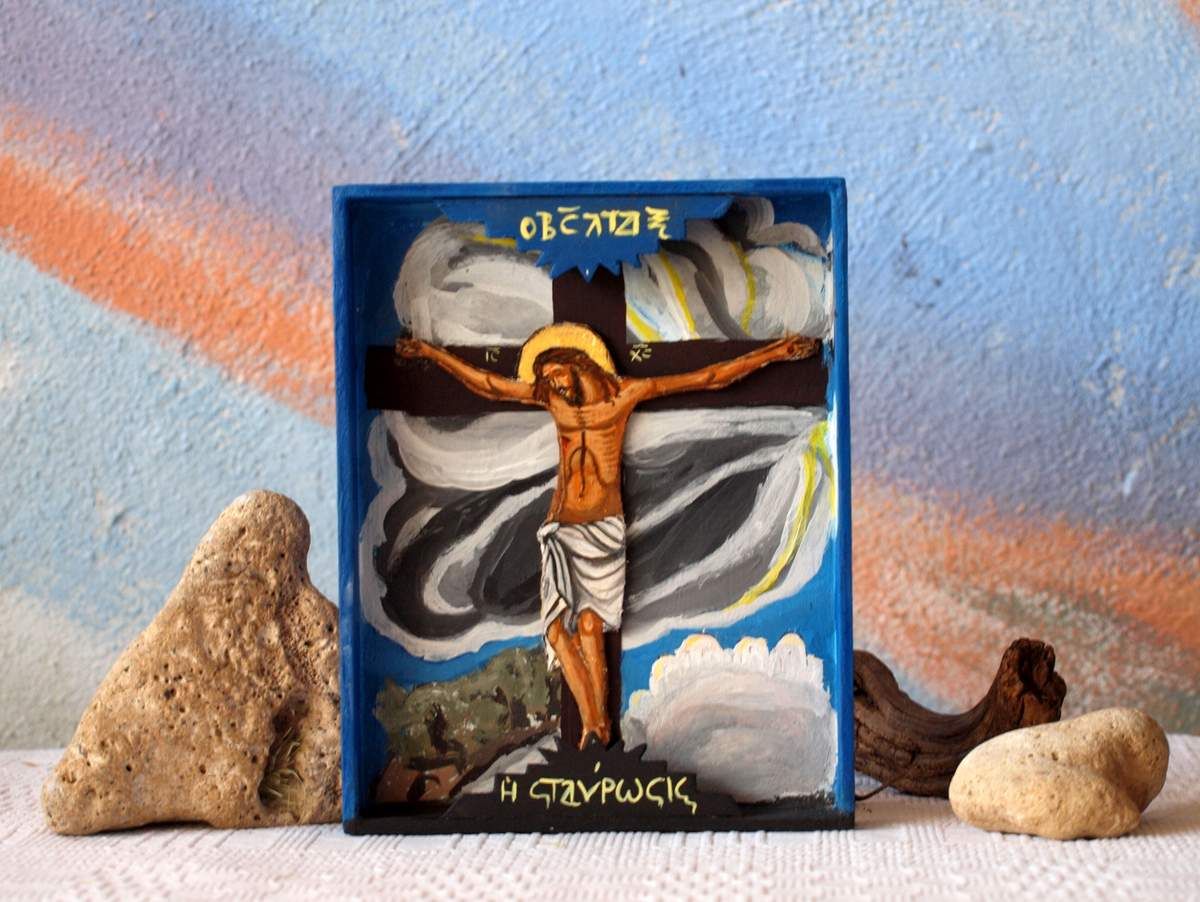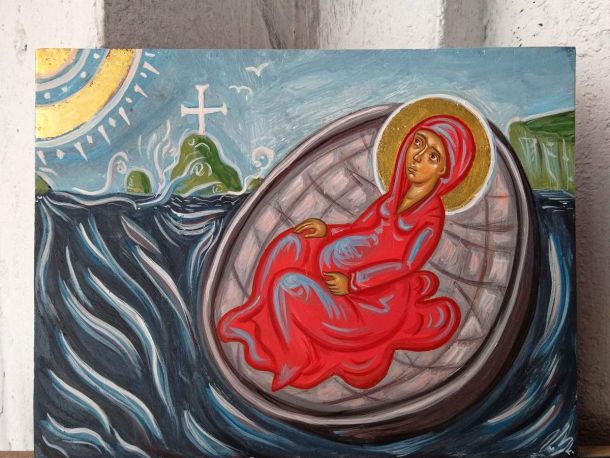
Byzantine “Expressionism”

Byzantine painting , an art form that looked like expressionism centuries (maybe a millennium) before expressionism, symbolism or surrealism ever even existed. Some of the characteristic elements of this painting “genre” that point towards this direction could be:
-The main figure/ feature Enlightened being -The saint, the Savior, the Holy Mother is bigger that everything else in the icon.
You can see saints in the background that are bigger than the ones in foreground- You can see Saints on horses that are equal in size with the animal. Proportions in general are based on priority that is a sort of unrealism: But then again, we seek meaning.
-The background too- it may be buildings (which are always distorted or proportionally wrong, rendered with reverse or inverse perspective ) it may have rough mountains – but the main mentality is that the background shows a distortion, a lack of space or time. That is also why gold is used like black, at times symbolizing enlightenment, something infinite and eternal.
We speak by symbols. As we alter proportions in space we also alter facial features or body proportions in order to highlight a spiritual quality.
So that is why the ears are longer, lips are thin, eyes are big, noses are way to long and that is also why bodies are “bodiless” – There is no muscular tone, and certainly no curves. The body is just like a cloth of convenience that would soon be thrown away.
Finally in byzantine painting we are speaking of , we are narrating (the first word in Greek for painting icons is historein which means saying the history of) the story of another reality, one that is more real than this one we are living in.





